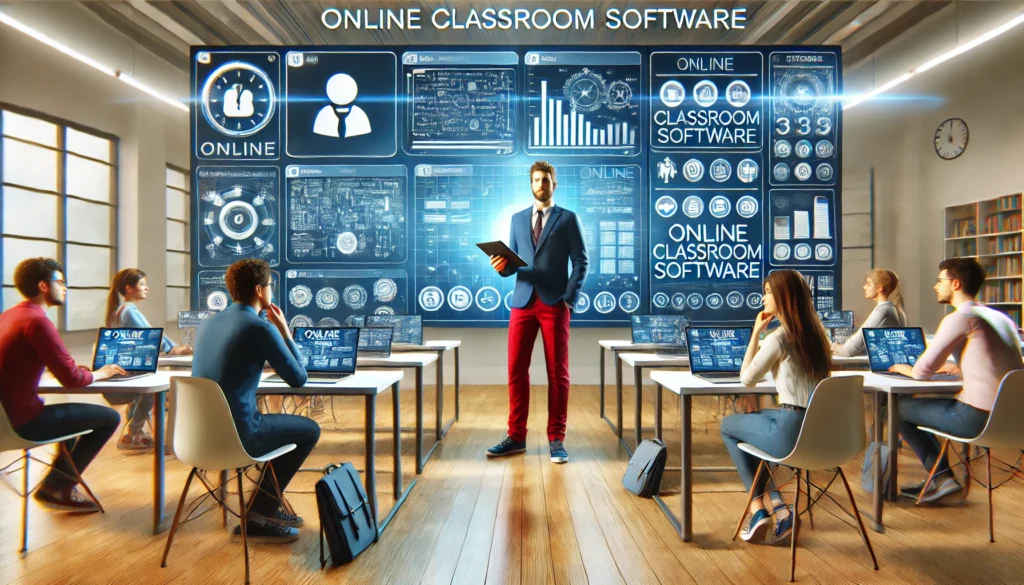The development of classroom tools has changed the way educational material is presented, with progress in technology leading to the creation of new platforms tailored to a variety of learning styles and needs. This piece investigates the developments influencing the direction of classrooms in the future.
Tailored Educational Journeys
Individualized education stands out in today’s educational technology landscape, as online classroom software now provides customized experiences to match learning preferences and speeds more effectively than before. Adaptive learning algorithms evaluate how students are progressing and tailor content to boost their involvement in studies. These personalized methods promote an educational setting that meets a variety of learner needs.
The Incorporation of Artificial Intelligence
AI impacts education by using tools that improve student engagement through chatbots and virtual assistants, providing immediate feedback and supporting effective communication channels with students. In addition, it assists educators in creating more interactive and tailored course content.
Engaging Users Through the Use of Gamification
The use of gamification is changing the landscape of learning environments by integrating elements similar to games, such as badges, leaderboards, and rewards, to enhance engagement and incentivize participation among users. These interactive features are well received by learners as they make the learning process more enjoyable and ultimately improve retention rates. Gamification has the power to turn lessons into stimulating activities that encourage engagement from participants.
Virtual and Augmented Reality Technologies
Virtual reality (VR), along with augmented reality (AR), is transforming the way educational experiences are perceived and delivered. These interactive technologies offer simulations that enable students to delve into concepts through practical engagement. Whether it’s embarking on excursions or interacting with 3-dimensional models in a dynamic manner, VR and AR contribute to creating captivating and unforgettable learning experiences that blend theoretical understanding with hands-on practice.
Learning Together on Online Platforms
Online education now heavily relies on learning platforms as a key component of the learning experience for students today. These platforms promote teamwork and group interactions to create a strong sense of community among learners. Discussion forums, shared documents, and video conferencing tools are utilized to facilitate effective collaboration. They play a pivotal role in nurturing critical thinking and problem-solving abilities, which are crucial for practical real-life scenarios.
Analyzing Data for Monitoring Performance
Educators are transforming the way they monitor student progress with the help of data analytics tools on online platforms that offer in-depth insights into how students learn. By analyzing engagement levels and pinpointing areas of strength and weakness in learning patterns, educators can adjust their teaching methods to better suit individual student needs and improve learning outcomes.
Mobile Learning Accessibility
The growth of mobile learning has expanded the reach of education to a wide range of people. Internet platforms are now more tailored for smartphones and tablets, allowing students the freedom to learn at their convenience and location. User-friendly designs ensure that educational materials are readily available, encouraging learning beyond the classroom environment.
Keeping Security and Privacy in Mind
With the growth of mobile learning comes a focus on safeguarding user data. Privacy and security measures are top priorities for educational platforms to shield sensitive information. Encryption methods, secure logins, and frequent security upgrades work together to protect the data of both students and teachers. By emphasizing privacy, these platforms establish trust among users, fostering a secure educational setting.
Engaging Multimedia Material
Visual aids, such as videos and animations, are becoming increasingly popular in classrooms to facilitate learning by simplifying information through engaging multimedia content that appeals to various senses and enhances comprehension and retention.
Cloud-based Services
Cloud-based options provide flexibility and scalability in the realm of learning platforms by enabling educators to store and access resources for streamlined collaboration. This technology enables students and educators to access course materials from anywhere they are located, enhancing the experience overall. The increased storage and improved accessibility offered by cloud systems cater to the expanding needs of education.
Conclusion
The landscape of online classroom software is continually evolving, driven by innovative trends that enhance learning experiences. From personalized approaches to AI integration, these advancements cater to diverse educational needs. As technology continues to evolve, online education platforms will likely embrace even more transformative trends, shaping the future of learning in unprecedented ways. Embracing these changes ensures that education remains accessible, engaging, and effective.

